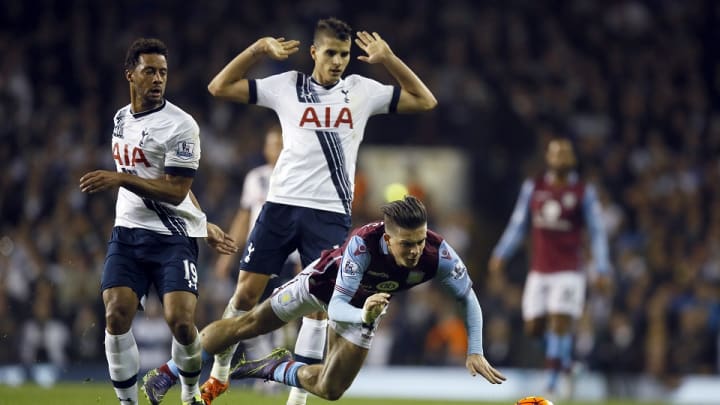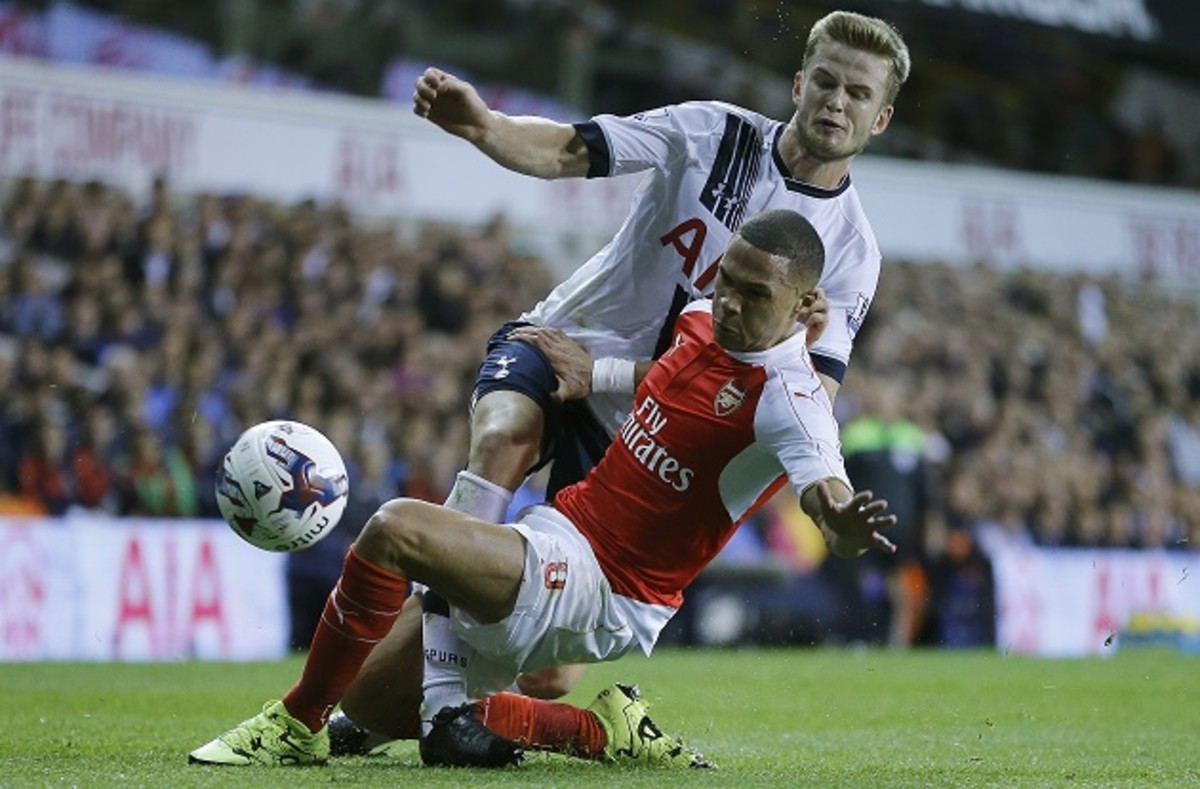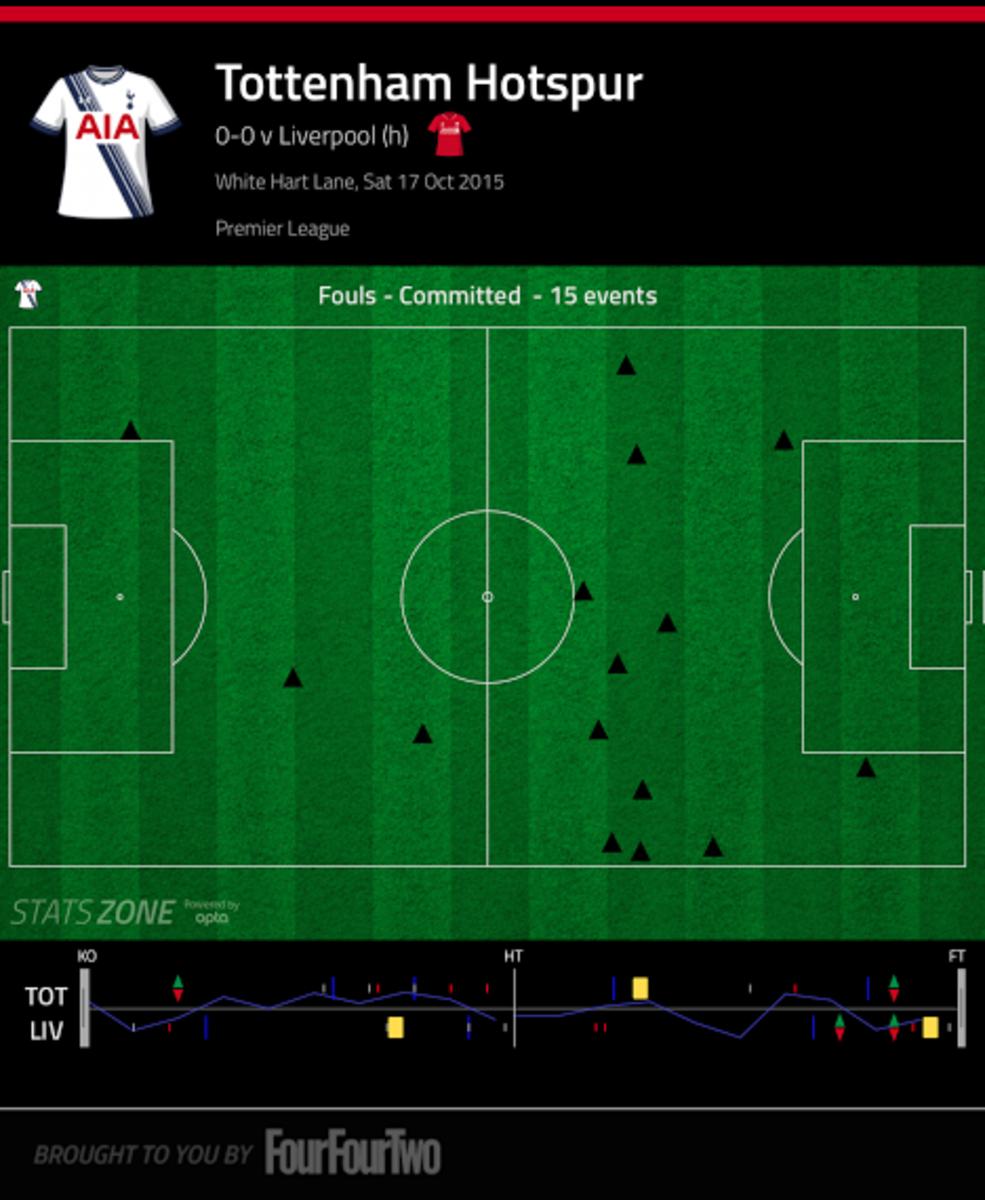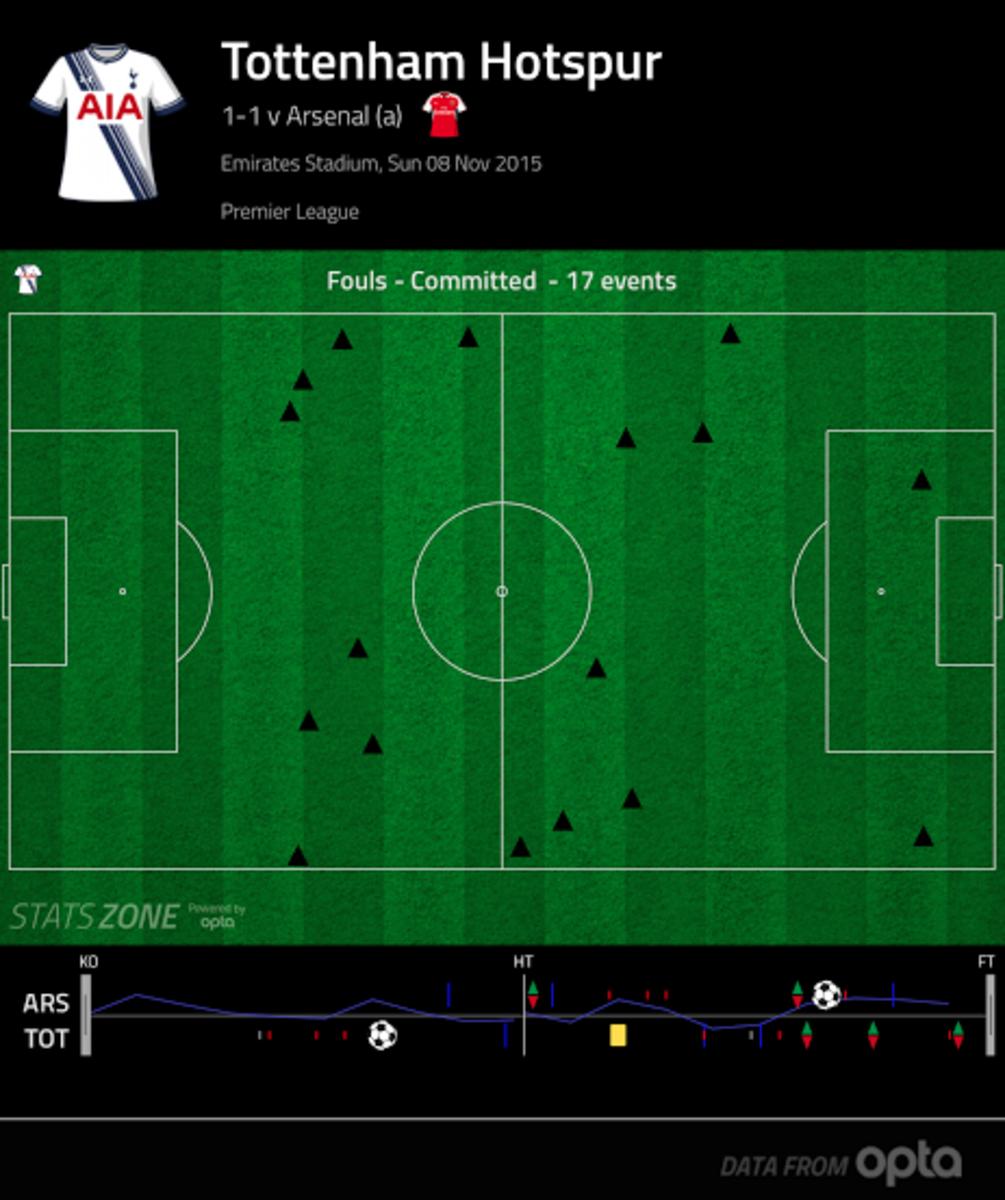Tottenham's fouling gives it a fair chance of making Champions League

With Chelsea in tragicomic free fall, Liverpool still stumbling through a protracted post-Luis Suarez malaise and Manchester United’s attack dying a death by 1,000 passes, the door is wide open for Tottenham to claim its first Champions League berth in six seasons.
Last season’s Spurs side would have been ill-equipped to seize this sort of opportunity. While Harry Kane and Co. scored enough goals (fifth most in the league), the defense performed closer to relegation-level; only four teams conceded more than the 53 goals allowed by Tottenham.
The problem was especially bad against quality opponents. Spurs lost home and away to both Manchester City and Liverpool, conceding 11 goals in the process. They also lost 3–0 away to Chelsea, and by the same scoreline at Manchester United. As a result, Tottenham finished six points back of fourth-place United, and a distant 11 back of third-place Arsenal.
This time around, however, Tottenham looks like the real deal. The club is currently riding an 11–match unbeaten run, and a finish as high as third place is well within reach, especially given Spurs’ string of solid results against the sorts of high-class opponents that tormented them a season ago.
The attack has picked up where it left off (again with the fifth-most goals in the league), but the defense has made major strides compared to the porous unit of a season ago. Despite having played a punishing schedule that has included the league’s current top four along with Liverpool and Everton, Tottenham has the league’s fourth-best defensive record this time around.
Most teams that make a big leap in defensive resilience from one season to the next do so at the expense of their attack — hi, Tony Pulis! — but this has not been the case for Tottenham, which is still scoring goals at an elite rate. So, the question must be asked: How has Tottenham so vastly improved its defense while still maintaining its attacking firepower?

The easy (and not entirely wrong) answer is to look at the new additions to the squad, as well as the shift in role of the returning Eric Dier. Center midfielder Dele Alli and center back Toby Alderweireld have proven to be shrewd signings, while Dier’s move to defensive midfield has brought added stability to the side. But even though these personnel shifts have helped, they are only a small piece of the puzzle.
The main reason for Tottenham’s defensive improvement comes as a result of a rather cynical (but also brilliant) stylistic shift: manager Mauricio Pochettino has subtly turned his Spurs side into masters of the tactical foul.
Tactical fouling refers to the practice of intentionally fouling the opposition, bucking conventional wisdom and treating the foul not as punishment for an accidental slip-up but rather as a carefully-considered strategy to increase defensive stability.
Teams that tactically foul can be identified via two main criteria: 1) a high volume of fouls and 2) a high percentage of fouls in a team’s own attacking half. Tottenham fits the bill in both categories, as the club has committed 12 more fouls than the next closest team in the league, and 36 more than the Premier League average, with a huge percentage coming in advanced areas. (Note: Tottenham committed the ninth-most fouls in the league last season).
The first major function of Tottenham’s tactical fouling is the limiting of dangerous counterattacks.
All good attacking teams have to commit players forward at some point, but the risk of attacking in numbers outweighs the reward if a team is repeatedly punished on the counter. Consider Tottenham’s 4–1 loss at Manchester City last year — among the aforementioned other heavy defeats — wherein Spurs had their share of attacking chances, but ultimately left themselves far too susceptible to counters.
But now that Spurs are tactically fouling so proficiently, they can have the best of both worlds. Rather than concede a dangerous counterattack after throwing numbers forward, they simply foul the opposition immediately after losing possession, stopping a potential jailbreak before it begins.
Tottenham did this majestically last month against Jurgen Klopp’s counterattack-dependent Liverpool at White Hart Lane. After conceding a humiliating 18 goals in their previous five meetings with Liverpool, Spurs put the clamps on Liverpool in a huge way, conceding just three shots on target in a commanding shutout. Note just how aggressively Tottenham fouled Liverpool in the attacking half, with many of the infractions committed right on the edge of the attacking third.

Tottenham’s 12 attacking-half fouls were more than the average Premier League team’s total fouls per game, and it stands as a brilliant example of how a potent counterattacking side can be neutralized with properly executed fouling. The only thing missing from the Tottenham performance was a goal — and, in fairness to Spurs, they did have the better chances — but it was a satisfying result regardless given their embarrassing recent history against Liverpool.
The other main function of Tottenham’s tactical fouling is to help maintain its defensive shape if a player makes a positioning mistake or is beaten in a one-on-one situation. Much of this occurs in the middle third of the field. Though these sorts of tactical fouls are less visible than counterattack stoppers, they are just as important. In other words, Pochettino wants his Tottenham team to stop all promising attacks — not just true counterattacking situations — before they can reach fruition. To properly do so, Spurs must be willing to haul down runners in the middle as well as the attacking third.
The goal of this sort of tactical foul is primarily to stop teams from working the ball through the middle of the field into the extremely dangerous areas in and around the center of the penalty box (known by stat-heads as the “danger zone”). In the absence of a competent tactical fouling system last season, an exposed Tottenham defense conceded the sixth-most shots in the league from this area. Goals predictably followed.
This season, armed with a newfound ability to foul runners before they can get into threatening positions, Tottenham’s defensive danger zone has been the league’s least busy. As a result, it’s of little surprise that their defensive record has improved immensely.
We saw a terrific example of this sort of fouling in Tottenham’s fine 1–1 draw against Arsenal at the Emirates Stadium earlier this month. Note how Tottenham repeatedly fouled Arsenal in midfield areas, but took great care to avoid fouls that would lead to threatening set pieces.

The extensive fouling disrupted Arsenal’s rhythm so much that Santi Cazorla had to be withdrawn at halftime, and the Gunners never really hit top gear in a stuttering performance.
Add the Arsenal and Liverpool results to a resounding 4–1 win over Manchester City featuring 17 Tottenham fouls and a 0–0 draw against Everton featuring 20, and you’ve got a team that has fixed its big-game issues in an impressive way. The defensive solidity has predictably extended to games against weaker opponents, and, given that Tottenham’s attack has chugged right along, the end result is a darn good soccer team.
These are heady times for Tottenham, which has never finished higher than fourth in the Premier League era. But Pochettino’s tactical fouling has righted the many wrongs that plagued Spurs a season ago. With other top-four rivals in turmoil, Tottenham’s surge could hardly have come at a better time. A historic third-place finish is very much there for the taking.

